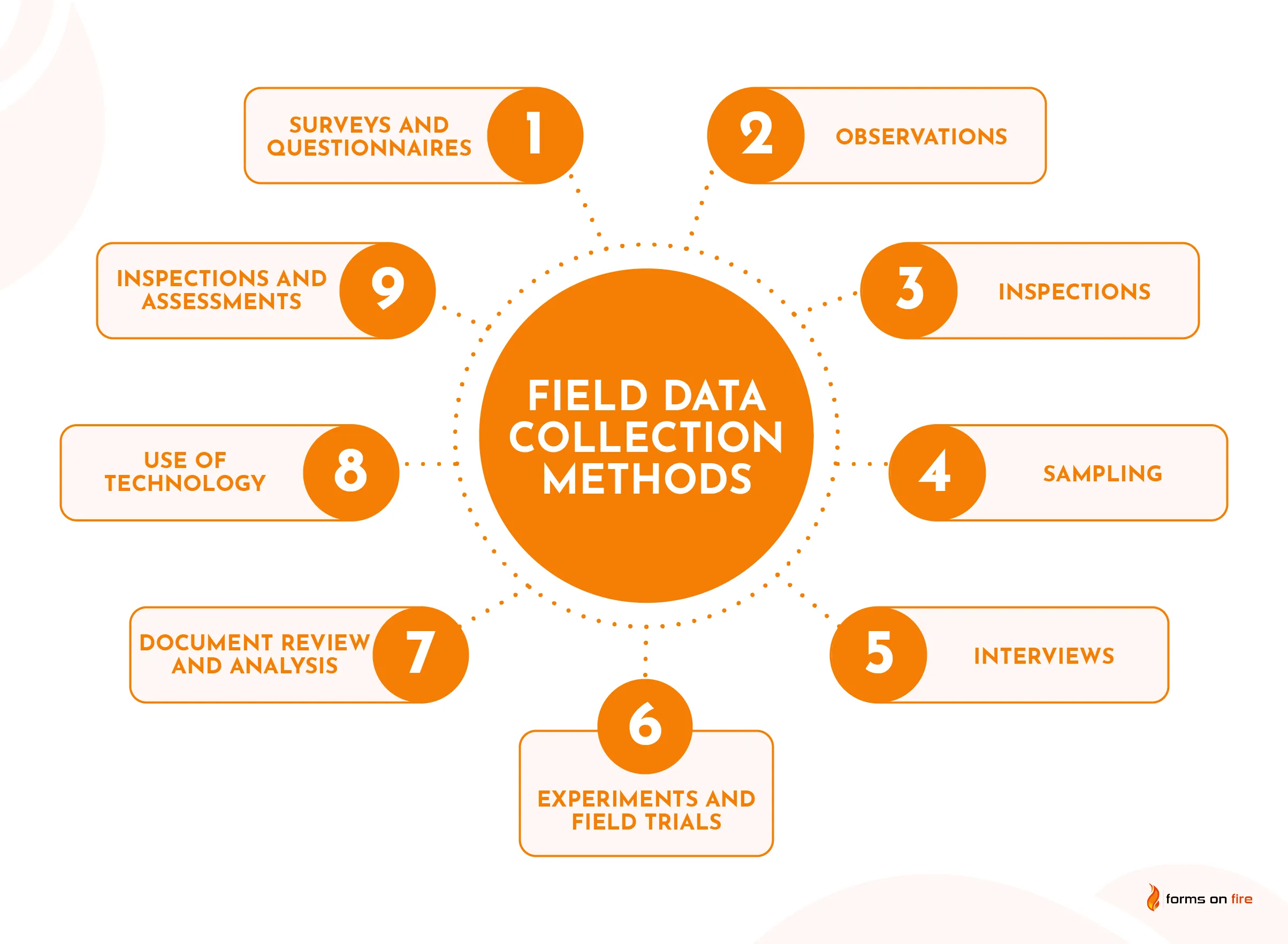
for Reliable Insights
In an era dominated by data-driven decision-making, the ability to collect accurate, reliable data is a cornerstone for success across industries. Whether you’re a researcher, business analyst, or marketer, employing effective data collection techniques ensures the insights you derive are meaningful and actionable.
This comprehensive guide delves into key data collection methods, best practices, tools, and challenges, providing you with the strategies needed to master this essential skill.
Why Data Collection is Critical
The process of obtaining, quantifying, and evaluating data in order to find answers, resolve issues, or reach well-informed conclusions is known as data collection. When done correctly, data collection:
- Informs Decisions: Provides factual insights to support strategies.
- Enhances Efficiency: Streamlines processes and eliminates guesswork.
- Improves Outcomes: Leads to better results in research, business, and other fields.
Types of Data: Primary vs. Secondary
Source: https://unstop.com/blog/difference-between-primary-and-secondary-data
Credits: unstop.com*
Before choosing a collection technique, understanding the types of data is essential.
Primary Data
Primary data is collected firsthand for a specific purpose. It is tailored, accurate, and current but can be resource-intensive to gather.
- Examples: Surveys, experiments, interviews.
- Best For: Unique research questions or specific organizational needs.
Secondary Data
Secondary data is pre-existing and collected by someone else. It is cost-effective and time-saving but may lack specificity.
- Examples: Government reports, industry publications.
- Best For: Broad overviews or supplementing primary data.
Key Data Collection Techniques
1. Surveys and Questionnaires
- Purpose: Collect large amounts of data quickly.
- Method: Online platforms, paper forms, or phone interviews.
- Advantages:
- Scalable and cost-effective.
- Provides quantitative and qualitative insights.
- Tools: Google Forms, Typeform, SurveyMonkey.
2. Interviews
- Purpose: Gather in-depth qualitative data through one-on-one interaction.
- Method: Structured (pre-defined questions) or unstructured (open-ended).
- Advantages:
- Rich, detailed information.
- Builds rapport for honest feedback.
- Tools: Zoom, Microsoft Teams.
3. Focus Groups
- Purpose: Capture group opinions and dynamics.
- Method: Moderated discussions with 5–10 participants.
- Advantages:
- Encourages diverse viewpoints.
- Useful for exploratory research.
- Tools: Miro, FocusVision.
4. Observation
- Purpose: Record behavior or events in real-time.
- Method: Participant (involved in activities) or non-participant (observer only).
- Advantages:
- Unbiased data collection.
- No reliance on self-reported information.
- Tools: Notebooks, video cameras.
5. Web Scraping
- Purpose: Extract large-scale data from websites.
- Method: Automated scripts or tools to pull data.
- Advantages:
- Real-time, scalable data.
- Useful for market trends and competitor analysis.
- Tools: Beautiful Soup, Scrapy.
6. Experiments
- Purpose: Test hypotheses under controlled conditions.
- Method: Manipulate variables to observe effects.
- Advantages:
- Reliable cause-and-effect insights.
- Reproducible outcomes.
- Tools: Jupyter Notebook, SPSS.
Comparison of Data Collection Techniques
| Technique | Best For | Advantages | Limitations |
| Surveys | Quantitative insights | Scalable, cost-effective | May have response bias |
| Interviews | In-depth understanding | Detailed, flexible | Time-consuming, small sample size |
| Focus Groups | Group opinions | Diverse perspectives | Expensive, difficult to moderate |
| Observation | Behavioral analysis | Unbiased, real-world data | Limited context |
| Web Scraping | Online trends | Scalable, real-time insights | Ethical and legal considerations |
| Experiments | Testing hypotheses | Controlled, reproducible | Requires resources and expertise |
Best Practices for Effective Data Collection
1. Define Clear Objectives
- Identify the problem and what you aim to achieve.
- Example: Understanding customer preferences for product development.
2. Choose the Right Method
- Select a technique that aligns with your goals and resources.
- Example: Use surveys for broad feedback and interviews for detailed insights.
3. Ensure Data Quality
- Validate data accuracy and consistency.
- Techniques: Data cleaning, de-duplication.
4. Protect Privacy
- Comply with regulations like GDPR or CCPA.
- Implement anonymization and encryption for sensitive data.
5. Pilot-Test Your Approach
- Test your methods on a smaller scale before full deployment.
- Adjust based on feedback.
6. Leverage Technology
- Automate repetitive tasks using data collection tools.
- Example: Use APIs for real-time data extraction.
Tools for Data Collection
| Tool | Purpose | Features |
| Google Forms | Surveys | Free, customizable templates |
| Qualtrics | Advanced survey management | Logic branching, analytics |
| Scrapy | Web scraping | High-speed scraping, scalable |
| Tableau | Data visualization | Interactive dashboards, analytics |
| OpenRefine | Data cleaning | Handle messy datasets |
| SPSS | Statistical analysis | In-depth quantitative analysis |
Challenges in Data Collection
1. Data Quality Issues
- Problem: Missing or inconsistent data skews results.
- Solution: Employ robust cleaning techniques.
2. Bias in Responses
- Problem: Respondents may provide inaccurate or socially desirable answers.
- Solution: Use neutral wording and anonymous surveys.
3. Resource Limitations
- Problem: Data collection can be time-consuming and costly.
- Solution: Prioritize techniques that balance cost and impact.
4. Ethical Concerns
- Problem: Collecting sensitive data may raise privacy concerns.
- Solution: Adhere to ethical guidelines and ensure transparency.
Real-World Example: Data Collection in Retail
Objective:
Understand customer satisfaction to improve in-store experiences.
Approach:
- Surveys: Distributed online and in-store to gather feedback on products and services.
- Observation: Monitored customer behavior, such as navigation patterns and product interaction.
- Interviews: Conducted in-depth discussions with a small group of loyal customers.
Outcome:
- Identified issues with store layout, leading to a redesign that increased sales by 15%.
- Enhanced customer service training based on feedback.
Future Trends in Data Collection
1. AI-Powered Data Collection
- Automates and optimizes processes for faster, more accurate data collection.
- Example: Chatbots collecting customer feedback in real-time.
2. Real-Time Data Integration
- Enables dynamic decision-making by integrating live data streams.
- Example: IoT devices providing real-time performance metrics.
3. Blockchain for Data Integrity
- Ensures data authenticity and prevents tampering.
- Example: Using blockchain for secure transaction records.
4. Ethical Data Practices
- Focus on transparency, informed consent, and privacy protection.
Conclusion: Mastering Data Collection Techniques
The first step to obtaining actionable insights and succeeding in data-driven efforts is becoming proficient in data collection methodologies. You can make sure that your data is accurate, dependable, and significant by being aware of the advantages and disadvantages of different approaches, using the appropriate tools, and following best practices.
A careful approach to data collecting enables you to make defensible decisions and produce significant outcomes, whether you’re performing trials, surveys, or consumer behavior analysis. To fully utilize your data, begin honing your data collection techniques right now.


